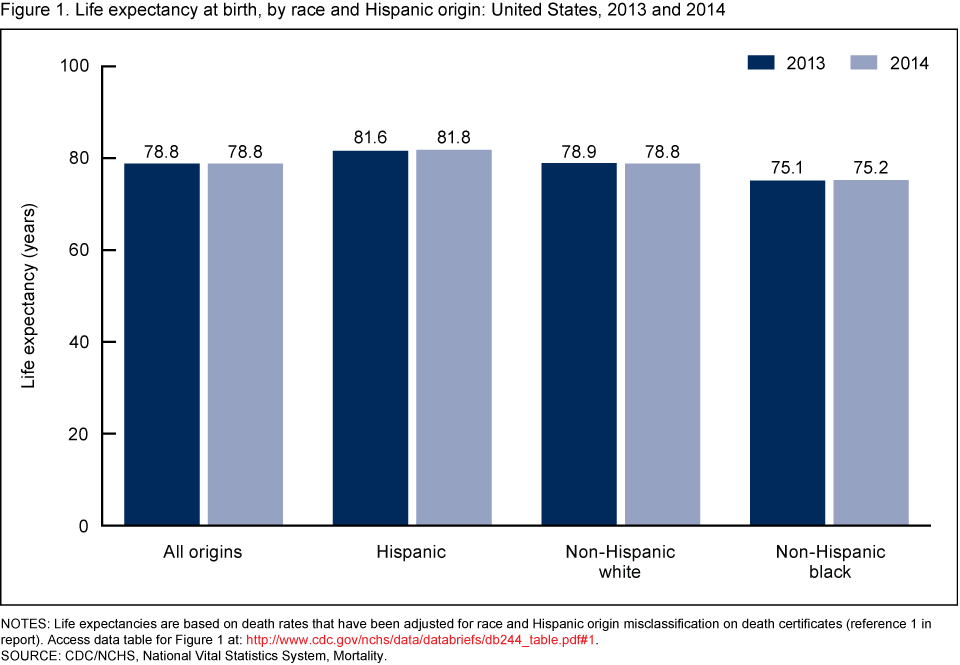Changes in Life Expectancy by Race and Hispanic Origin in the United States, 2013–2014
Posted on byA new NCHS report presents changes in life expectancy by race, Hispanic origin, and sex in the United States between 2013 and 2014.
Life expectancy was estimated using complete period life tables that are based on death rates adjusted for race and Hispanic origin misclassification on death certificates.
Life expectancy represents the average number of years that a hypothetical group of infants would live at each attained age if the group was subject, throughout its lifetime, to the age-specific death rates prevailing for the actual population in a given year.
Findings:
- Between 2013 and 2014, life expectancy at birth for the total U.S. population (78.8 years), males (76.4), or females (81.2) did not change.
- Life expectancy at birth increased by 0.4 years for non-Hispanic black males and by 0.1 years for Hispanic males. It remained unchanged for non-Hispanic white males.
- Life expectancy at birth increased by 0.2 years for Hispanic females, remained unchanged for non-Hispanic black females, and declined by 0.1 years for non-Hispanic white females.
- Hispanic males experienced the greatest increase in life expectancy at age 65 (0.3 years), followed by Hispanic females (0.2), and all other groups experienced a 0.1 year increase in life expectancy at age 65.
Posted on by
Categories Uncategorized
Page last reviewed: April 21, 2016
Page last updated: April 21, 2016
Content source:
CDC, National Center for Health Statistics


